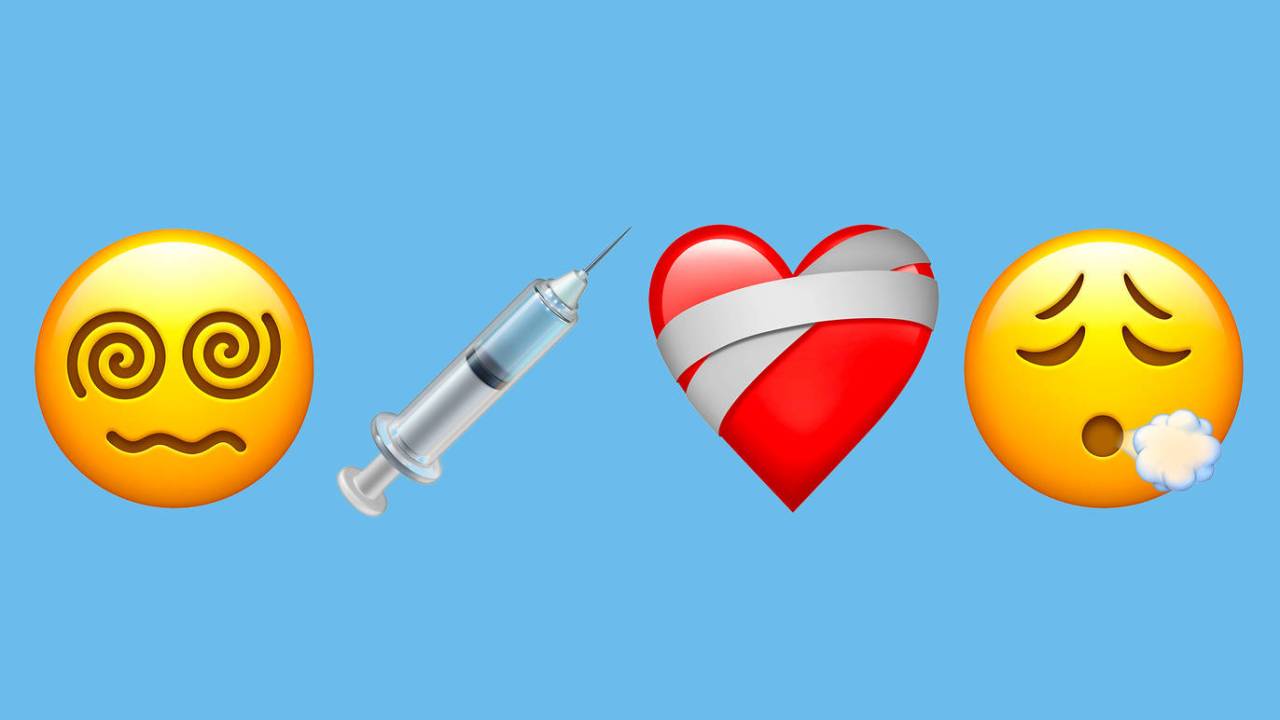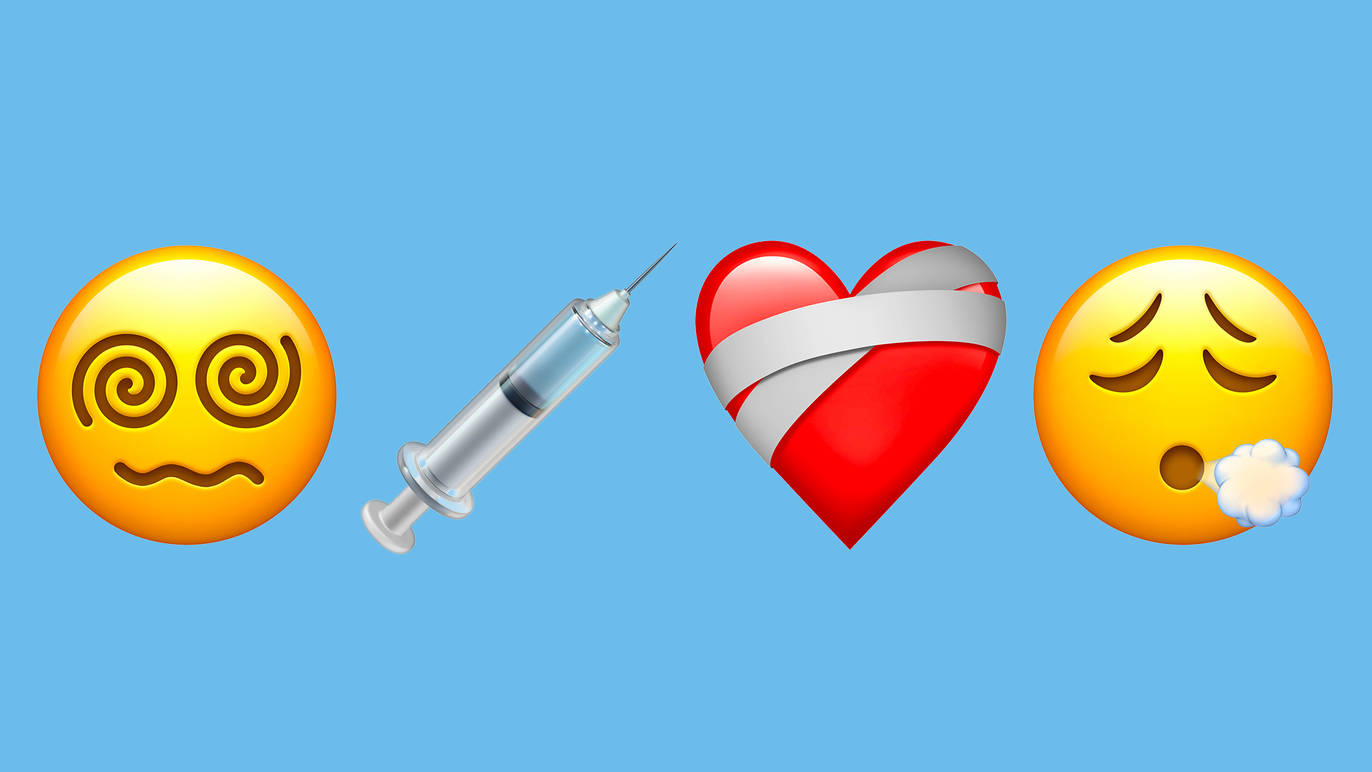News that Apple has updated its emoji range to include pictograms specific to the pandemic may either disgust you or inspire you to send a volley of missives out immediately. As an emojiste, I am in the latter camp. I am delighted that I now have a bandaged heart, a dizzy face with spiral eyes, a face exhaling with exhaustion and, of course, a bloodless syringe in my emoji lexicon. My nearest and dearest WhatsApp interlocutors may groan but I simply don’t care. Far from an erosion of linguistic standards, I see emojis as an exciting semiotic advance. I only wish that Roland Barthes, the grand French semiotician of the last century, were around to decode it all.
Emoji, which originated in Japan in the 90s, can be used in different ways. Linguists count several different common functions of emoji, although there are always freestylers in any linguistic code. Firstly, there is the idea of substitution: a picture says a thousand words and can replace text entirely. In my family Whatsapp group, we often use substitution to deal with the onslaught of baby pictures; a heart will do nicely and betrays no hierarchies of affection.
Second up, emoji can reinforce shared experiences. Communication in my mothers’ WhatsApp group is almost entirely pictographic, consisting of the brain explosion emoji or its excellent counterpart, the mangled face, repeated at least five times for effect, and we all identify instantly with the emotions being conveyed – tested patience, exhaustion, brain fog.
Lastly, emoji are used alongside words in what linguists term ‘meta-comment’ to clarify an emotional state. The bandaged heart emoji will be a useful one when, say, lamenting how there are no delivery slots left at the supermarket, and the face exhaling with exhaustion will be most effective when we learn that childcare may be suspended further depending on the arrival of new variants. Having encountered a plethora of unprecedented pandemic experiences over the last year, is it any wonder that we’re reaching for a new shared language with which to express our frustration?
In 2013, Jeremy Burge created Emojipedia, the world’s only online emoji directory. Confused by the presence of a doughnut on his iPhone keyboard, Burge wondered whether it had always been there and found no central advisory body to clarify the matter. In the spirit of enterprise, Emojipedia was born. But Burge, whose official title is Chief Emoji Officer, could not have foreseen the effects of Covid-19 on global emoji use.
In an article on the site accompanied by illustrative graphs, you can see how emoji use has evolved throughout the pandemic. Unsurprisingly, its findings confirm that we crave new and more accurate symbols to convey the limits of our experience. Thus, the microbe emoji that looks something like a green bird poo is no longer de rigueur although we still find use for the face with a medical mask. With the advent of the vaccine chapter, users went bonkers for the syringe emoji although its symbolic strength was compromised by the dripping blood. Unicode, which creates and updates the emoji directory responded, creating the more accurate syringe we may now use to accompany our vaccine selfies.
Take emoji seriously and you can see how they act as cultural and political bellwethers for our times. When the Black Lives Matter protests flared up last year after George Floyd’s death, Unicode saw a global rise in the use of the raised fist with medium-dark skin tone. It can take years for new words to bed into a culture but symbols – and their ability to transcend language divides – seem to catch on far more quickly in the age of instant messaging.
In spite of the rise of new emoji, it is the traditional face emoji that have best tracked the arc of the pandemic. From the Munch face (which would surely make Edvard Munch turn in his grave) to other faces of sadness and alarm including the face that looks like a Cheshire cat gurning, emoji enable us to translate our personal experience into something that is shared and understood by others.
In his book The Emoji Code (2017), Vyvyan Evans concludes that the capacity of emoji to form a human writing system is, as yet, limited. And Stephen Fry described Unicode as an Académie française for your phone, painting emoji as a tyrannical institution which subjugates the linguistic will of the people. After Covid, they may have cause to reconsider.
Emoji have allowed us to voice novel experiences and identify common ground with those from whom we have been kept apart. I prefer to see the potential for emoji to change the way we process social and political flux. What for example, might a Harry and Meghan emoji come to mean? Or better still, a Boris? Whilst I wait for Unicode to update their political range, I shall content myself with the latest offerings and drive my husband mad with the bandaged heart symbol.







Comments